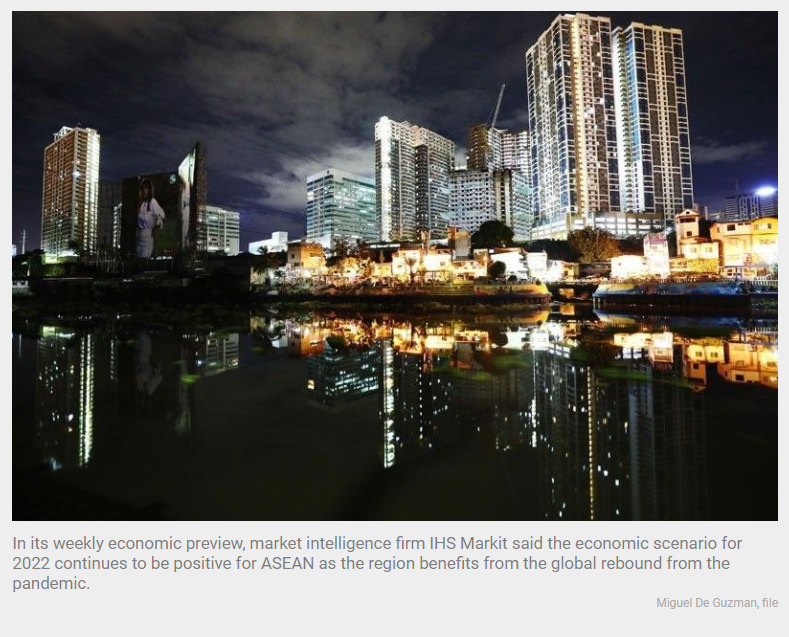‘Philippines to lead ASEAN growth in 2022’
MANILA, Philippines — Economic recovery for Southeast Asia is expected to be more pronounced next year, as the region learns to live with COVID, with the Philippines expected to post the strongest rebound.
In its weekly economic preview, market intelligence firm IHS Markit said the economic scenario for 2022 continues to be positive for ASEAN as the region benefits from the global rebound from the pandemic.
Most countries in the region this year suffered from COVID case surges due to the Delta variant, leading to renewed large-scale mobility curbs, which disrupted business activities and further delayed rebounds in consumption.
“While the ASEAN’s economic rebound in 2021 has been significantly dampened by new waves of COVID Delta variant, the outlook is for gradually improving economic conditions in 2022,” IHS Markit Asia-Pacific chief economist Rajiv Biswas said.
“GDP (gross domestic product) growth momentum is expected to improve in 2022, as vaccination programs reach a much higher share of the total population of the more populous Southeast Asian nations, allowing a gradual return to more normal domestic economic conditions,” he said.
IHS Markit expects positive growth across all ASEAN economies in 2022 largely due to base effects over the past two years.
The Philippines is seen posting the strongest growth at around 7.2 percent. The growth figure is within the government’s seven to nine percent target for 2022.
Philippine economic growth for this year is eyed at four to five percent, but local and international economists and financial institutions are already expecting a lower figure due to the recent lockdown.
The Philippines will be followed by Vietnam at around 6.2 percent, Brunei at 5.8 percent and Cambodia at 5.6 percent. Myanmar is seen posting the slowest growth at less than one percent amid ongoing political tensions in the country.
Despite next year’s high growth, IHS Markit noted that many Southeast Asian nations still face considerable challenges.
“Some nations still have relatively low second dose vaccination rates, problems with accessing vaccine supplies and also the very large size of the population in many nations, notably in Indonesia, the Philippines and Vietnam,” Biswas said.
In the region, Singapore and Malaysia have the highest vaccination rates. Cambodia and Brunei have also recorded high first dose vaccination rates.
While economic growth momentum is seen improving next year, Biswas emphasized that most ASEAN countries will face the medium-term challenge of fiscal consolidation.
This is due to the high level of government expenditure since 2020 as part of fiscal response, which in turn led to huge jumps in debt-to-GDP.
IHS Markit also said that recovery would likely be uneven across sectors, with industries like electronics manufacturing, household consumer products, financial services and information technology likely to be leading the recovery.
On the other hand, the tourism and air transportation sectors are expected to have a more gradual recovery as international travel restrictions remain a major impediment in the near term.
And while the region suffered its worst economic slump in decades, Biswas said ASEAN would continue to be one of the fastest growing regions in the world over the long term.
The entire ASEAN economy is forecast to more than double over the next decade, increasing from $3 trillion in 2020 to $6.8 trillion by 2030.
“Over the next decade, ASEAN will be one of the three main growth engines of Asia-Pacific, together with China and India,” Biswas said.
Source: https://www.philstar.com/business/2021/10/25/2136402/philippines-lead-asean-growth-2022


 English
English




